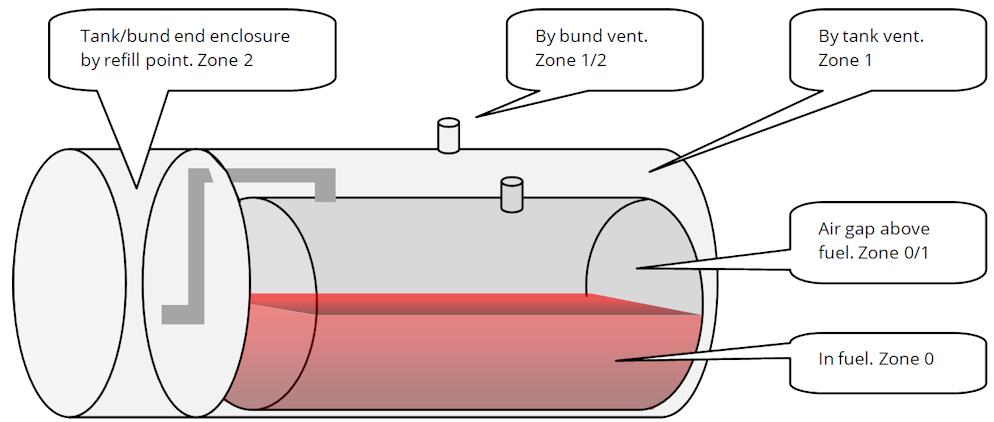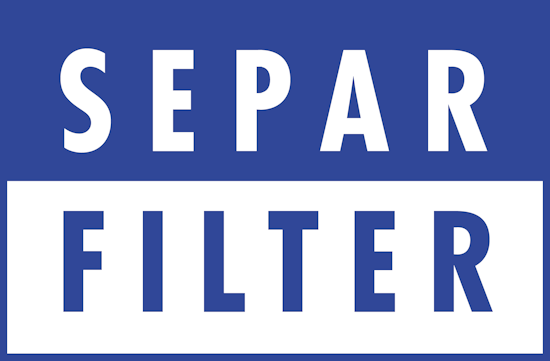ATEX (ATmosphere EXplosive) and Fuel Polishing Systems
In mid 2015, diesel was reclassified. As it has a flashpoint of 55 deg C and above, whereas the lower limit for hazardous material has been moved from 55 deg C to 60 deg C, diesel must now be considered to be a hazardous material. This means clients may wish to consider ATEX in future installations.
There are guidelines for equipment being used in ATEX Zoned environments, and we hear many different interpretations. It is our considered opinion that some form of Standard is required.
- HSE Guidelines
- Hazardous areas are classified into zones based on an assessment of the frequency of the occurrence and duration of an explosive gas atmosphere, as follows:
• Zone 0: An area in which an explosive gas atmosphere is present continuously or for long periods;
• Zone 1: An area in which an explosive gas atmosphere is likely to occur in normal operation;
• Zone 2: An area in which an explosive gas atmosphere is not likely to occur in normal operation and, if it occurs, will only exist for a short time.
Other Sources
- Various sources have tried to place time limits on to these zones, but none have been officially adopted. The most common values used are:
• Zone 0: Explosive atmosphere for more than 1000h/yr
• Zone 1: Explosive atmosphere for more than 10, but less than 1000 h/yr
• Zone 2: Explosive atmosphere for less than 10h/yr, but still sufficiently likely as to require controls over ignition sources.
- How do you quantify zones?
- To quantify where the zones are is not easy, it depends on the environmental conditions, the likelihood of a hazardous environment, temperature, ventilation of the areas, etc. To assist the following schematic represents a double skin fuel tank, with tank vents on the top and a tank end enclosure on the left hand side. It is part full with diesel fuel.

- Many different opinions are in place with regards to how far a zone should cover. Reading the guidelines, distance is not necessarily an issue that affects zoning in the case of diesel. That said every case should be reviewed on an individual basis as one site differs to the next.
The fuel itself may therefore be considered zone 0, the air above it inside the tank is considered zone 0 or zone 1. The gap between the fuel tank and its second skin is also considered to be zone 1, the tank top vent to the outside environment is considered zone 1 or possibly 2. The Tank end enclosure is considered to be zone 2, unless it is well ventilated when it might be considered a save zone (i.e. not zone classified).
- Zone Definition
- There have been a few questions seeking clarification of ATEX Zone areas. Zone definition is the same for any product, and is based on gaseous atmosphere and flammability of products, gas or liquid or dust. A measurement device or a pump in the bottom of a tank must be Zone certified for a full or empty tank and does not matter if the item is in Vapour or product. If a spark can cause an ignition then this equipment must be certified for Zone 0/1 in vapour and when submerged most would specify Zone 0. Deciding whether or not your site / installation will require ATEX Zone approved equipment comes down to an informed risk assessment. The ATEX zoning system produces different results for varying liquids, gasses and dusts. In regards to fuel polishing, it is typically only the liquid hazard which is the most likely to be present. For diesel to be at risk of catching fire there needs to be a temperature in excess of its flash point (55 deg C) and the product must be in misting form, such as a pin hole in a hose, or a leak in a pipe join gasket, or a badly fitting threaded joint.
- So the risk assessment questions are.
- Is the fuel ever likely to reach/exceed or come into contact with a temperature in excess of its flash point (55 deg C)?
- What is the likelihood that there will be a misting-leak for more than 10 hr/ year in the area that you are considering for zone control?
- Are there any other stored products that require ATEX Control Zone areas nearby?
- If the answer is yes to either 1 or 2 or 3, then the area will require ATEX Zone considerations.
If the Answer is no to 1, 2 and 3, then your risk assessment results in the area being classified as either the safe area (i.e. no need for ATEX products) or possibly Zone 2 if there is no guarantee misting leaks cannot occur in the area.
- So what does this mean to fuel polishing system installations?
- All WASP manufactured fuel polishing systems are constructed following best practices. This means that whilst ATEX is always a consideration, it is one which should more be focused on the external environment rather than the environment the fuel polishing system creates.
WASP units are diesel fuel polishing devices, meaning they will be transferring diesel fuel. When considering DSEAR/ATEX, it is diesel we must consider; according to EN590 diesel has a flash point above 55 deg C, however it does not burn easily. In order to ignite diesel, not only must you have an environment over 55 deg, but the fuel must also be in misting form.
Consider the risk review once more, and look at the temperature of stored / delivered Diesel. In the last 10 years, we have never seen stored diesel exceed 33 deg C within the United Kingdom. Other companies report tanks in Singapore at 45 deg C and in Australia about the same, so every case should be reviewed on an individual basis.
A WASP fuel polishing system cannot create the environment required to ignite diesel; there are no sources of ignition, no temperatures over 55 deg C and the fuel is only under tiny pressure. Internally the pressure side of our system is normally less than 1bar, the machine automatically switches off if it senses 2.5bar or higher; however you need a pin-prick hole and over 5 bar of pressure to create the hazardous misting of diesel.
Every part of our system is leak tested before despatch, meaning there are no potentials for leaks in normal operation; which when coupled with the low pressures means a WASP unit cannot mist the diesel.
- In summary
-
- WASP systems do not have any potential ignition source on our machine
- WASP systems cannot product the required diesel mist to create a burn/explosion



